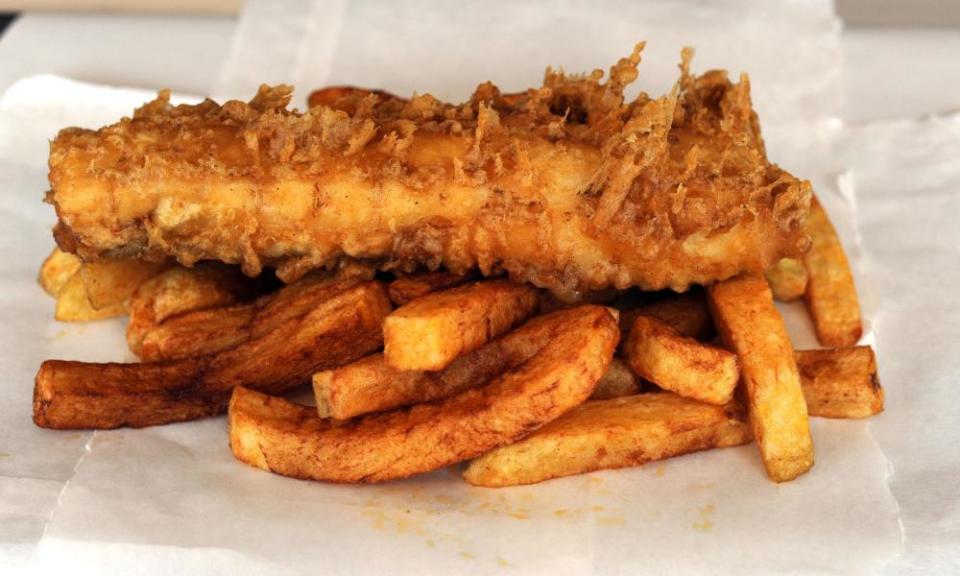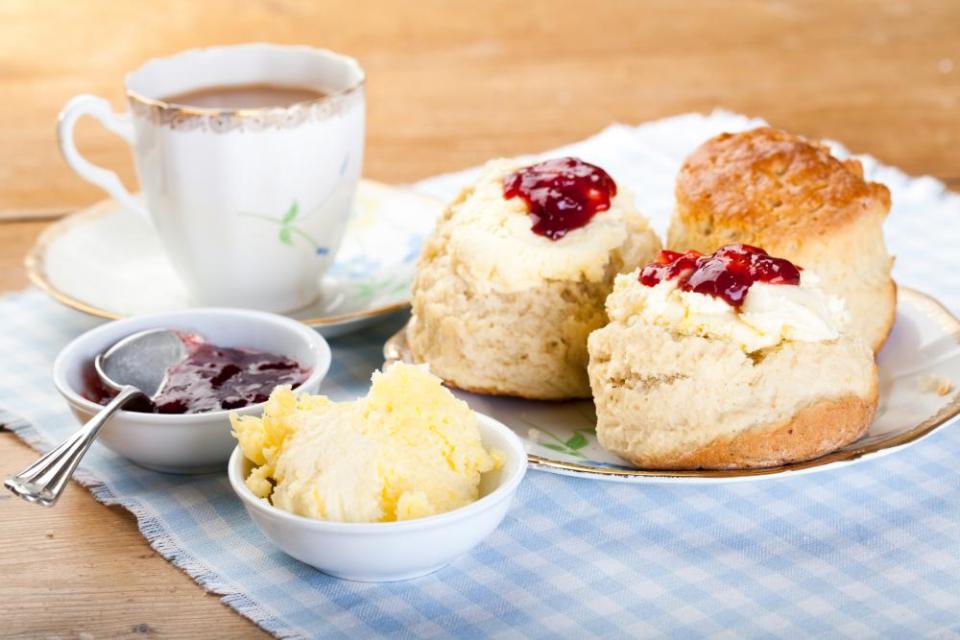How to recreate the taste of summer – from cream tea to the perfect Pimm’s
This is set to be a summer like no other. All major events are cancelled and a holiday abroad looks doubtful. But all is not lost. Summer’s top pastimes nearly always involve food – picnics, ice cream, Pimm’s! – and there is no reason to bypass the season’s al fresco delights, even if you do end up consuming them on your window ledge.
Maybe there won’t be big weddings this summer, maybe there won’t be carnival parades – but oh there will be burritos. Here, chefs show how to recreate the taste of summer from the comfort of your own home.
Wimbledon
Strawberries and cream should be self-explanatory – it is the Pimm’s that you will need to get right in order to replicate that Centre Court feeling. Mix one part Pimm’s with three parts lemonade and lots of ice. Add to a medley of cucumber, mint, orange and strawberries to serve.
“Macerate the strawberries in the Pimm’s overnight,” says Jack Sotti, a brand ambassador at Diageo, which makes the gin-based fruit cup. “Get your mixer as cold as possible. This will mean it stays fizzier for longer and tastes way more delicious.” Sip while seated next to your local tennis courts – with gyms still closed, everyone who has ever picked up a racket is channelling their inner Andy Murray, so there is plenty to keep tennis fans entertained.
Festivals
Whether it is a souvlaki wrap, wood-fired pizza or a cheese toastie, food has become integral to the festival experience. Burgers are the “ultimate festival fuel” according to Craig Povoas, the director of Burger & Beyond in London, which usually has a food truck at events such as Glastonbury.
When making your own, “loosely hand-ball the mince and press directly on to a flat-top griddle”, he advises: “This sears and traps all the flavour.”
For chips, Povoas says to use Maris Piper or King Edward potatoes, peeled and cut into sticks, then brined for 30 minutes in cold water and vinegar before cooking. Double fry to get that golden crunch: heat the oil to 160C (320F) and cook for three minutes, then drain on paper towels. Increase the oil temperature to 190C (375F) and fry for another four minutes.
Alternatively, go veggie with another festival favourite: the burrito. James Leahy, who runs Burrito Joe in London, fries onions with garlic, cumin and fennel seeds for five minutes, then adds black turtle beans (soaked for 24 hours in water) and enough water to cover the mixture by 7cm (3in), before simmering for two hours. Then, in a separate pan, he adds oil, more onion, garlic, spring onions and spices (he uses smoked paprika and chipotle chilli in adobo) and fries until golden, before adding the beans and partially mashing everything while cooking for 15 minutes. To serve, he takes a warmed tortilla and tops with the beans, pico de gallo salsa, guacamole, cheese, coriander and sour cream, then rolls it up. “Warm the tortilla first,” says Leahy, “as this makes it more pliable when you wrap and helps stop it splitting.”
The seaside
Tom Kitchin’s recipe for battered haddock takes a bit of prep – but it is worth it. Put 250g plain white flour in a bowl and make a well in the centre. Add 125ml warm whole milk and 125ml sparkling mineral water and slowly whisk. Crumble over 3g fresh yeast and beat well to combine, then add a pinch of salt. Cover tightly with cling film and place in a warm spot for eight hours, whisking occasionally.

When you are ready to cook, heat to 185C enough oil for deep-frying. Pat dry two haddock fillets (about 150g each, skinned), then season with salt and pepper. Lightly coat the fillets with flour, tapping off the excess. Give the batter a good stir, then dip in the fillets, letting the excess drip back into the bowl. Add the fillets to the oil and fry for four minutes, or until golden brown. Serve immediately with tartare sauce and a lemon wedge. Wrap in newspaper if you must.
Notting Hill carnival
August’s event has been cancelled for the first time since its inception in 1966. If you are already craving rice and peas, then it is time to start soaking those red kidney beans. “You must use dried beans,” says Brian Danclair, owner of Fish, Wings & Tings in south London. “A lot of people take shortcuts and use a can, which is awful.”
After an overnight soak, his recipe involves boiling the beans with some garlic and one scotch bonnet pepper. Once soft, add coconut milk, thyme, onions, more garlic, pumpkin, carrots and red peppers. Then add long grain rice and salt, to taste, and simmer until the rice is cooked. “My rice and peas is like a Christmas tree when it’s done!” says Danclair, whose dish works well as a meal in its own right, or alongside traditional accompaniments such as chicken or curried goat.
Cream tea
Online searches for afternoon tea deliveries have surged during the lockdown, but the classic cream tea – scones, jam and clotted cream – is easy enough to make yourself.

“It is best to eat scones on the same day they are baked,” says Chris Taylor, a course tutor at Bettys cookery school – not that this should be a problem during lockdown. His recipe for eight sultana scones calls for 250g plain flour, 1tsp baking powder, 100g butter (chilled and diced) and a pinch of salt, placed in a large bowl. Rub everything together using your fingertips, then stir in 50g caster sugar and 50g sultanas. Beat 1 egg with 90g buttermilk, then make a well in the flour mixture and pour in three-quarters of this mix. Using a dinner knife, gently cut the ingredients together until a soft dough starts to form. Knead this by hand, then roll out to approximately 3cm (1.2in) in depth. Cut into rounds, brush the tops with the remaining buttermilk mix and bake at 190C for 15-20 minutes, until well risen and golden brown.
Proceed to argue to your heart’s content about whether jam or cream should be applied first.
Glyndebourne
This year, soggy sandwiches just won’t cut it – not that they ever did at Glyndebourne. This year’s festival is cancelled, but, with restaurants also closed, posh picnics abound. Scott Paton, the chef at Àclèaf in Devon, warns against making sarnies in advance. “Tupperware up your basics and assemble them in situ,” he says. “Box up fresh crab mixed with mayo, lemon and herbs, take some good thick bread and make open sandwiches to order”.
Tom Aikens, the head chef at Muse in London, suggests adding two different mustards to potato salad “for real oomph”. “I always use a French’s as well as a pommery grain mustard,” he says. “Then add sliced spring onions, chopped dill pickle and raw red onion”. Plus Hellmann’s mayonnaise and potatoes, of course.
Don’t forget the dips – central to any good picnic spread. The chef Jason Atherton suggests a quick pistachio version, “which is not only delicious for crudités or crisps, but also smeared on bread and paired with smoked salmon or cured meats”. Blend 100g pistachios, 100g yogurt, 1 chopped chilli, 1 clove garlic (grated), 200g chopped coriander, the juice of 2 limes, 60ml extra virgin oil and sea salt to taste.
Glyndebourne has issued its own tips – including downloadable backgrounds for recreating the festival with friends on Zoom – and the 2009 production of A Midsummer Night’s Dream is available to watch online. But if opera is not your thing, a good picnic blanket will suffice.
Outdoor cinema
Watching Dirty Dancing under the stars has become a summer tradition for some – and one that needn’t be thwarted by the current situation. All you need is a classic film and a few cinema snacks. Popcorn is easy – heat kernels and oil in a lidded pan and wait for them to stop popping – but the warm weather is as good an excuse as any for ice-cream. Theo Randall, the chef at the InterContinental hotel in London, makes vegan coconut ice-cream by heating 400ml coconut cream and 400ml coconut milk in a pan with 100g caster sugar and 60ml maple syrup. Blend this well, then take it off the heat. Transfer to a fridge and leave overnight. When cold, place into an ice-cream maker for 30 minutes – or place in a shallow container and put in the freezer for 3-4 hours, stirring every 30 minutes.

 Yahoo News
Yahoo News 